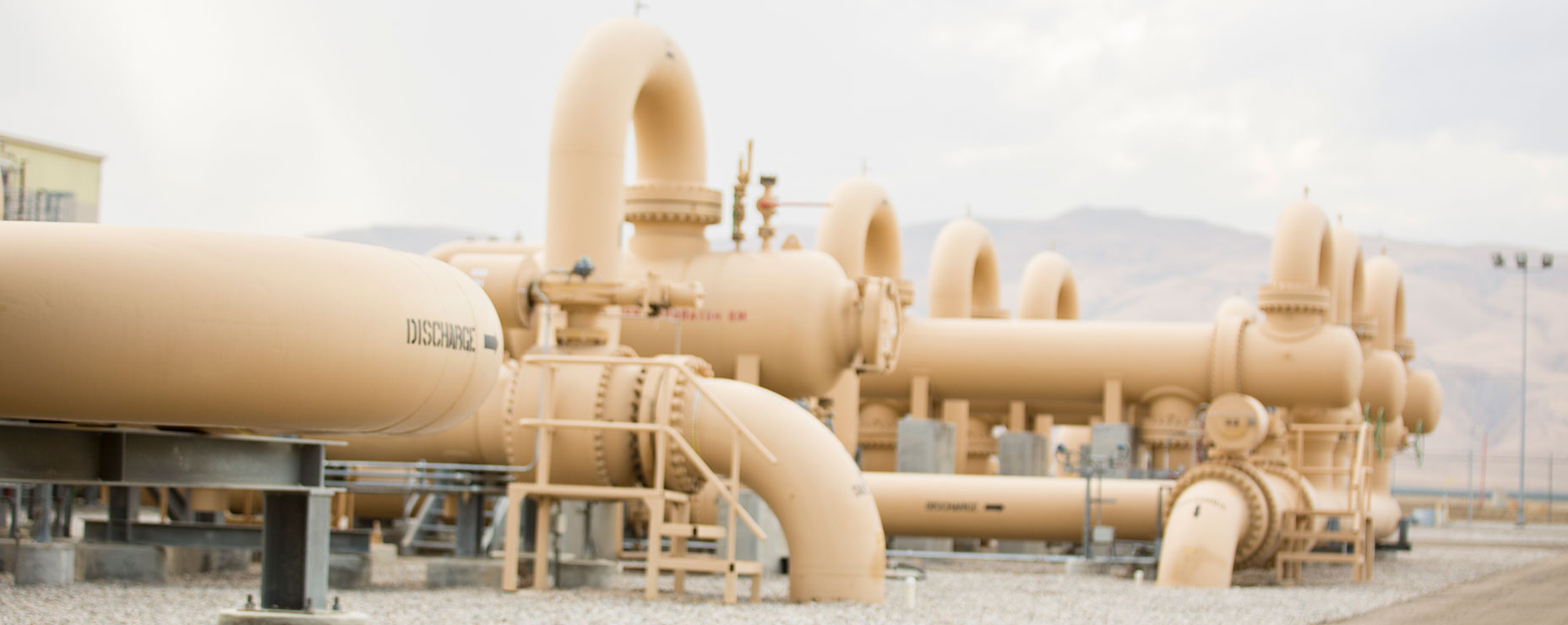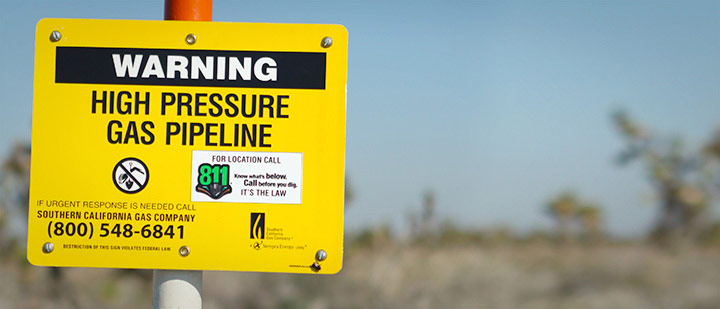
Report a Natural Gas Leak
If you suspect a natural gas leak, evacuate the area immediately and call us from a safe location: 1-800-427-2200
Call 911 promptly, from a safe location, if there is damage resulting in a natural gas leak that may endanger life, cause bodily harm, cause property damage, and/or if you are unable to contact SoCalGas for any reason.
As the nation's largest natural gas distribution utility, we serve more than 20 million people in communities throughout Central and Southern California, from Visalia to the Mexican border.
We start by getting natural gas from producers and suppliers (both within our service area and outside California) and then deliver it through our 101,000 miles of pipeline to customers for use in cooking, heating and business.
In order to safely transport and deliver that natural gas, we rigorously maintain our natural gas pipeline, monitor the natural gas for quality and add a distinctive odor to help detect leaks.
Safety First
The safety and security of our pipeline system is our top priority. We have about 5,000 trained employees ready to respond quickly to incidents throughout our service territory.
We regularly performs pipeline safety tasks, including:
- Patrolling
- Testing
- Repairing
- Replacing pipelines
Identifying Potential Problems
Our goal is to identify and resolve potential problems before they happen. To do this, we apply our extensive knowledge and rigorous integrity management to the maintenance of our natural gas pipeline facilities. By using advanced safety inspection tools to monitor pipe conditions, we're able to verify the effectiveness of our ongoing maintenance activities.
In addition to our internal efforts, regulators routinely audit our program to make sure we're in compliance with all safety regulations. Regulators have consistently found that we meet or exceed all federal and state requirements for safe pipeline operations and maintenance, including ongoing technical training and testing for employees.
Pipeline Safety and You
Part of our commitment to safety means making sure our customers have the knowledge and tools to keep themselves safe. That's why we've put together the following resources to help you better understand pipeline safety.
Pipeline Markers
Pipeline markers indicate the locations of most major pipelines near you. Since most pipelines are buried underground, pipeline markers are intended to let you know the approximate locations of major pipelines and include our emergency number. However, markers do not indicate the depth or number of pipelines in the area.
Here is an example of a pipeline marker you might see:

Pipeline Maps
If you want to find out where pipelines are located throughout your area, see the following maps:
- SoCalGas' Pipeline Map
- National Pipeline Mapping System * (for operators of other oil and gas pipelines)
Keep in mind that these maps only indicate the general location of pipelines and shouldn't be used as a substitute for calling 811 at least two business days before digging.
Additional Pipeline Safety Resources
- Help avoid pipeline damage by calling 811 before you dig
- Learn how to identify a potential pipeline leak